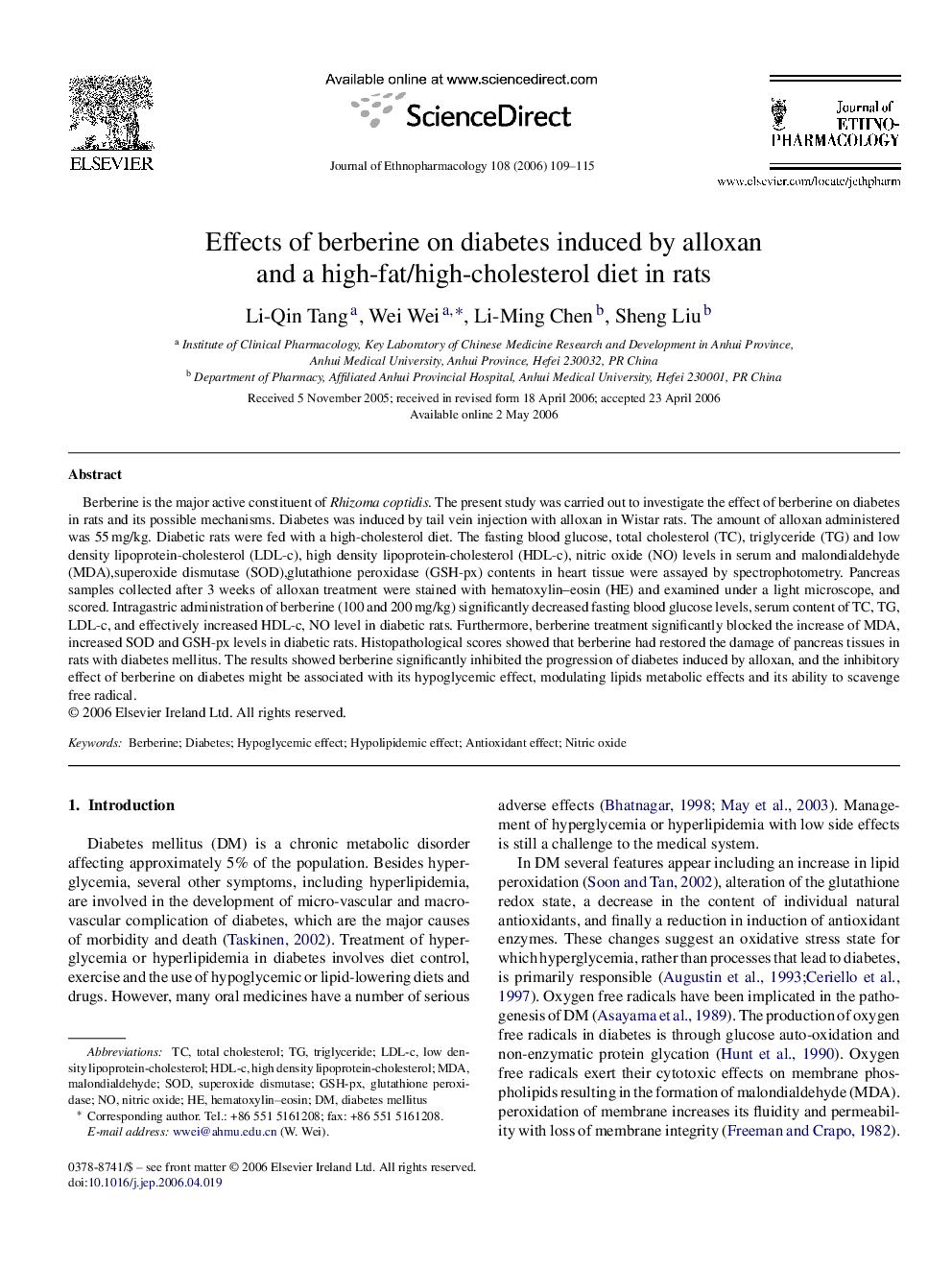| Article ID | Journal | Published Year | Pages | File Type |
|---|---|---|---|---|
| 2548180 | Journal of Ethnopharmacology | 2006 | 7 Pages |
Berberine is the major active constituent of Rhizoma coptidis. The present study was carried out to investigate the effect of berberine on diabetes in rats and its possible mechanisms. Diabetes was induced by tail vein injection with alloxan in Wistar rats. The amount of alloxan administered was 55 mg/kg. Diabetic rats were fed with a high-cholesterol diet. The fasting blood glucose, total cholesterol (TC), triglyceride (TG) and low density lipoprotein-cholesterol (LDL-c), high density lipoprotein-cholesterol (HDL-c), nitric oxide (NO) levels in serum and malondialdehyde (MDA),superoxide dismutase (SOD),glutathione peroxidase (GSH-px) contents in heart tissue were assayed by spectrophotometry. Pancreas samples collected after 3 weeks of alloxan treatment were stained with hematoxylin–eosin (HE) and examined under a light microscope, and scored. Intragastric administration of berberine (100 and 200 mg/kg) significantly decreased fasting blood glucose levels, serum content of TC, TG, LDL-c, and effectively increased HDL-c, NO level in diabetic rats. Furthermore, berberine treatment significantly blocked the increase of MDA, increased SOD and GSH-px levels in diabetic rats. Histopathological scores showed that berberine had restored the damage of pancreas tissues in rats with diabetes mellitus. The results showed berberine significantly inhibited the progression of diabetes induced by alloxan, and the inhibitory effect of berberine on diabetes might be associated with its hypoglycemic effect, modulating lipids metabolic effects and its ability to scavenge free radical.
